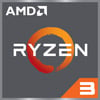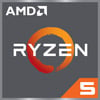
AMD A9-9425 Benchmark, Test and specs
Last updated:
The AMD A9-9425 has 2 cores with 2 threads and is based on the 4. gen of the AMD A series. The processor uses a mainboard with the FP4 socket and was released in Q2/2017. The AMD A9-9425 scores 491 points in the Geekbench 5 single-core benchmark. In the Geekbench 5 multi-core benchmark, the result is 831 points.
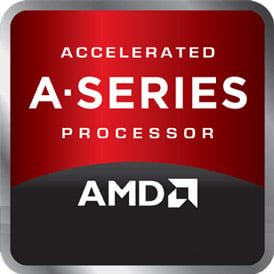
| Name: | AMD A9-9425 |
|---|---|
| Family: | AMD A (112) |
| CPU group: | AMD A9-9000 (4) |
| Architecture: | Stoney Ridge (Excavator) |
| Segment: | Mobile |
| Generation: | 4 |
| Predecessor: | -- |
| Successor: | -- |
CPU Cores and Base Frequency
The AMD A9-9425 has 2 CPU cores and can calculate 2 threads in parallel. The clock frequency of the AMD A9-9425 is 3.10 GHz (3.70 GHz). The number of CPU cores greatly affects the speed of the processor and is an important performance indicator.
| CPU Cores / Threads: | 2 / 2 |
|---|---|
| Core architecture: | normal |
| Cores: | 2x |
| Hyperthreading / SMT: | No |
|---|---|
| Overclocking: | No |
| Frequency: | 3.10 GHz |
| Turbo Frequency (1 Core): | 3.70 GHz |
| Turbo Frequency (2 Cores): | 3.10 GHz |
Internal Graphics
The AMD A9-9425 has integrated graphics, called iGPU for short. Specifically, the AMD A9-9425 uses the AMD Radeon R5 (Stoney Ridge), which has 192 texture shaders and 3 execution units. The iGPU uses the system's main memory as graphics memory and sits on the processor's die.
| GPU name: | AMD Radeon R5 (Stoney Ridge) |
|---|---|
| GPU frequency: | 0.85 GHz |
| GPU (Turbo): | No turbo |
| Compute units: | 3 |
| Shader: | 192 |
| Hardware Raytracing: | No |
| Release date: | Q2/2016 |
| Max. displays: | 3 |
|---|---|
| Generation: | 7 |
| Direct X: | 12 |
| Technology: | 28 nm |
| Max. GPU Memory: | 2 GB |
| Frame Generation: | No |
Hardware codec support
A photo or video codec that is accelerated in hardware can greatly accelerate the working speed of a processor and extend the battery life of notebooks or smartphones when playing videos.
| h265 / HEVC (8 bit): | Decode |
|---|---|
| h265 / HEVC (10 bit): | Decode |
| h264: | Decode |
| VP8: | Decode |
| VP9: | Decode |
| AV1: | No |
|---|---|
| AVC: | Decode / Encode |
| VC-1: | Decode |
| JPEG: | Decode / Encode |
Memory & PCIeThe processor can use up to 8 GB memory in 1 (Single Channel) memory channels. The maximum memory bandwidth is 17.1 GB/s. The memory type as well as the amount of memory can greatly affect the speed of the system. |
|
| Memory type: | Memory bandwidth: |
|---|---|
| DDR4-2133 | 17.1 GB/s |
| Max. Memory: | 8 GB |
| Memory channels: | 1 (Single Channel) |
| ECC: | No |
| PCIe: | 3.0 x 8 |
| PCIe Bandwidth: | 7.9 GB/s |
Thermal ManagementThe thermal design power (TDP for short) of the processor is 15 W. The TDP specifies the necessary cooling solution that is required to cool the processor sufficiently. The TDP usually gives a rough idea of the actual power consumption of the CPU. |
|
|---|---|
| TDP (PL1 / PBP): | 15 W |
| TDP (PL2): | -- |
| TDP up: | 25 W |
| TDP down: | 10 W |
| Tjunction max.: | 90 °C |
Technical details
The AMD A9-9425 is made in 28 nm. The smaller the manufacturing process of a CPU, the more modern and energy-efficient it is. Overall, the processor has 2.00 MB cache. A large cache can greatly speed up the processor's speed in some cases such as games.
| Technology: | 28 nm |
|---|---|
| Chip design: | |
| Socket: | FP4 |
| L2-Cache: | -- |
| L3-Cache: | 2.00 MB |
| AES-NI: | Yes |
| Operating systems: |
| Virtualization: | AMD-V |
|---|---|
| Instruction set (ISA): | x86-64 (64 bit) |
| ISA extensions: | SSE4a, SSE4.1, SSE4.2, AVX, FMA3, FMA4 |
| Release date: | Q2/2017 |
| Release price: | -- |
| Part Number: | -- |
| Documents: | -- |
Rate this processor
Benchmark results

The benchmark results for the AMD A9-9425 have been carefully checked by us. We only publish benchmark results that have been created by us or that have been submitted by a visitor and then checked by a team member. All results are based on and fullfill our benchmark guidelines.
Geekbench 5, 64bit (Single-Core)
Geekbench 5 is a cross plattform benchmark that heavily uses the systems memory. A fast memory will push the result a lot. The single-core test only uses one CPU core, the amount of cores or hyperthreading ability doesn't count.

|
Apple A5
2C 2T @ 1.00 GHz |
||

|
AMD A8-7600
4C 4T @ 3.80 GHz |
||
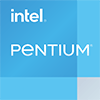
|
Intel Pentium 4405U
2C 4T @ 2.10 GHz |
||
|
|
AMD A9-9425
2C 2T @ 3.70 GHz |
||

|
AMD A8-7650K
4C 4T @ 3.80 GHz |
||

|
AMD Athlon II X4 760K
4C 4T @ 4.10 GHz |
||

|
Intel Core i5-4202Y
2C 4T @ 2.00 GHz |
||
Geekbench 5, 64bit (Multi-Core)
Geekbench 5 is a cross plattform benchmark that heavily uses the systems memory. A fast memory will push the result a lot. The multi-core test involves all CPU cores and taks a big advantage of hyperthreading.

|
Intel Pentium N3710
4C 4T @ 2.56 GHz |
||

|
AMD GX-424CC
4C 4T @ 2.40 GHz |
||
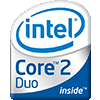
|
Intel Core2 Duo E7600
2C 2T @ 3.06 GHz |
||
|
|
AMD A9-9425
2C 2T @ 3.10 GHz |
||

|
Intel Pentium E5800
2C 2T @ 3.20 GHz |
||

|
Intel Pentium E6800
2C 2T @ 3.33 GHz |
||

|
Intel Pentium N3530
4C 4T @ 2.58 GHz |
||
Cinebench R20 (Single-Core)
Cinebench R20 is the successor of Cinebench R15 and is also based on the Cinema 4 Suite. Cinema 4 is a worldwide used software to create 3D forms. The single-core test only uses one CPU core, the amount of cores or hyperthreading ability doesn't count.

|
Intel Celeron N4500
2C 2T @ 2.80 GHz |
||

|
Intel Pentium Silver J5005
4C 4T @ 2.80 GHz |
||

|
Intel Pentium Silver J5040
4C 4T @ 3.20 GHz |
||
|
|
AMD A9-9425
2C 2T @ 3.70 GHz |
||
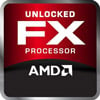
|
AMD FX-6300
6C 6T @ 4.10 GHz |
||

|
AMD A8-5600K
4C 4T @ 3.90 GHz |
||

|
Intel Celeron J4125
4C 4T @ 2.70 GHz |
||
Cinebench R20 (Multi-Core)
Cinebench R20 is the successor of Cinebench R15 and is also based on the Cinema 4 Suite. Cinema 4 is a worldwide used software to create 3D forms. The multi-core test involves all CPU cores and taks a big advantage of hyperthreading.
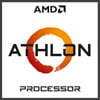
|
AMD Athlon 5350
4C 4T @ 2.05 GHz |
||

|
Intel Celeron J1900
4C 4T @ 2.42 GHz |
||

|
AMD A8-4500M
4C 4T @ 2.80 GHz |
||
|
|
AMD A9-9425
2C 2T @ 3.10 GHz |
||

|
Intel Core m3-6Y30
2C 4T @ 1.80 GHz |
||
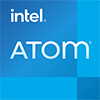
|
Intel Atom x7-E3950
4C 4T @ 1.60 GHz |
||

|
AMD A6-5400K
2C 2T @ 3.80 GHz |
||
iGPU - FP32 Performance (Single-precision GFLOPS)
The theoretical computing performance of the internal graphics unit of the processor with simple accuracy (32 bit) in GFLOPS. GFLOPS indicates how many billion floating point operations the iGPU can perform per second.

|
Intel Core M-5Y31
Intel HD Graphics 5300 @ 0.85 GHz |
||

|
Intel Core M-5Y70
Intel HD Graphics 5300 @ 0.85 GHz |
||

|
AMD A8-4555M
AMD Radeon HD 7600G @ 0.43 GHz |
||
|
|
AMD A9-9425
AMD Radeon R5 (Stoney Ridge) @ 0.85 GHz |
||

|
AMD A9-9420
AMD Radeon R5 (Stoney Ridge) @ 0.85 GHz |
||

|
AMD A8-7200P
AMD Radeon R5 (Kaveri) @ 0.63 GHz |
||
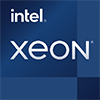
|
Intel Xeon W-11155MRE
Intel UHD Graphics 11th Gen (16 EU) @ 1.25 GHz |
||
Blender 3.1 Benchmark
In the Blender Benchmark 3.1, the scenes "monster", "junkshop" and "classroom" are rendered and the time required by the system is measured. In our benchmark we test the CPU and not the graphics card. Blender 3.1 was presented as a standalone version in March 2022.

|
Intel Core i5-4288U
2C 4T @ 2.60 GHz |
||

|
Intel Core i3-1005G1
2C 4T @ 3.40 GHz |
||

|
Intel Celeron J4125
4C 4T @ 2.70 GHz |
||

|
Intel Pentium Silver J5005
4C 4T @ 2.70 GHz |
||

|
Intel Celeron J3455
4C 4T @ 2.20 GHz |
||

|
Intel Pentium Silver N5030
4C 4T @ 2.40 GHz |
||
|
|
AMD A9-9425
2C 2T @ 3.10 GHz |
||
Estimated results for PassMark CPU Mark
Some of the CPUs listed below have been benchmarked by CPU-monkey. However the majority of CPUs have not been tested and the results have been estimated by a CPU-monkey’s secret proprietary formula. As such they do not accurately reflect the actual Passmark CPU mark values and are not endorsed by PassMark Software Pty Ltd.

|
AMD A6-6420K
2C 2T @ 4.20 GHz |
||

|
Intel Celeron N4020C
2C 2T @ 2.80 GHz |
||

|
Apple A8
2C 2T @ 1.50 GHz |
||
|
|
AMD A9-9425
2C 2T @ 3.10 GHz |
||
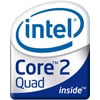
|
Intel Core 2 Quad Q6400
4C 4T @ 2.13 GHz |
||

|
Intel Pentium 4405Y
2C 4T @ 1.50 GHz |
||
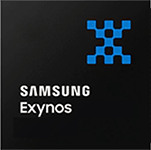
|
Samsung Exynos 7884
8C 8T @ 1.60 GHz |
||
CPU-Z Benchmark 17 (Multi-Core)
The CPU-Z benchmark measures a processor's performance by measuring the time it takes the system to complete all benchmark calculations. The faster the benchmark is completed, the higher the score.

|
Intel Pentium E2180
2C 2T @ 2.00 GHz |
||

|
Intel Pentium T3200
2C 2T @ 2.00 GHz |
||

|
Intel Core2 Duo T5750
2C 2T @ 2.00 GHz |
||
|
|
AMD A9-9425
2C 2T @ 3.10 GHz |
||

|
Intel Core2 Duo E6300
2C 2T @ 1.86 GHz |
||

|
Intel Pentium T2390
2C 2T @ 1.86 GHz |
||

|
AMD A4-4000
2C 2T @ 3.00 GHz |
||
Cinebench R15 (Single-Core)
Cinebench R15 is the successor of Cinebench 11.5 and is also based on the Cinema 4 Suite. Cinema 4 is a worldwide used software to create 3D forms. The single-core test only uses one CPU core, the amount of cores or hyperthreading ability doesn't count.

|
Intel Core i3-4158U
2C 4T @ 2.00 GHz |
||

|
AMD Athlon X4 835
4C 4T @ 3.40 GHz |
||

|
AMD Phenom II X6 1055T
6C 6T @ 3.30 GHz |
||
|
|
AMD A9-9425
2C 2T @ 3.70 GHz |
||

|
Intel Pentium Silver J5005
4C 4T @ 2.80 GHz |
||

|
Intel Core i3-5005U
2C 4T @ 2.00 GHz |
||

|
Intel Core M-5Y10
2C 4T @ 2.00 GHz |
||
Cinebench R15 (Multi-Core)
Cinebench R15 is the successor of Cinebench 11.5 and is also based on the Cinema 4 Suite. Cinema 4 is a worldwide used software to create 3D forms. The multi-core test involves all CPU cores and taks a big advantage of hyperthreading.

|
Intel Celeron N4020
2C 2T @ 2.70 GHz |
||

|
Intel Pentium N3520
4C 4T @ 2.42 GHz |
||

|
AMD Phenom II X2 B53
2C 2T @ 2.80 GHz |
||
|
|
AMD A9-9425
2C 2T @ 3.10 GHz |
||

|
Intel Celeron N2940
4C 4T @ 2.25 GHz |
||

|
Intel Celeron 3867U
2C 2T @ 1.80 GHz |
||

|
Intel Celeron 3865U
2C 2T @ 1.80 GHz |
||
Benchmarks

Geekbench 5 (SC)
2,488 entries
2,488 entries

Geekbench 5 (MC)
2,461 entries
2,461 entries

Cinebench R20 (SC)
656 entries
656 entries

Cinebench R20 (MC)
604 entries
604 entries

FP32 SP (iGPU)
2,042 entries
2,042 entries

Blender 3.1 Benchmark
212 entries
212 entries
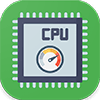
PassMark CPU-Mark
2,392 entries
2,392 entries

CPU-Z Benchmark 17 (MC)
733 entries
733 entries

Cinebench R15 (SC)
1,106 entries
1,106 entries

Cinebench R15 (MC)
1,101 entries
1,101 entries

Cinebench R11.5 (SC)
825 entries
825 entries

Cinebench R11.5 (MC)
836 entries
836 entries
Description of the processor
The AMD A9-9425 is a 2-core mobile processor of the entry-level class. It lacks the support of Hyper-Threading Technology, which is why it can only process 2 threads at the same time. It belongs to the Stoney-Ridge APU series from AMD, which is just a small refresh of the Carrizo architecture with slightly higher clock frequencies. The processor is still manufactured in 28 nm and can clock its two CPU cores with up to 3.1 GHz. A slightly higher clock frequency of up to 3.7 GHz is possible in single-core load scenarios.While the direct predecessor (AMD A9-9420, Carrizo) still had to make do with DDR3 RAM, the AMD A9-9425 can now handle DDR4 RAM. Specifically, DDR4-2133 is supported, which is the lowest speed with DDR4 Ram. The AMD A9-9425 only supports one memory channel, which limits the memory bandwidth. A maximum of 8 GB of RAM can be addressed by the processor.
The AMD Radeon 5 (3 execution units and 192 shaders), which runs at 0.8 GHz, is used as the iGPU. This iGPU can for the first time also decode h.265 (HEVC) in hardware and relieves the system enormously when playing videos. The VP9 video codec from YouTube is also supported by the internal graphics card.
The mobile processor can be configured with a TDP of 10 to 25 watts and is accordingly economical. The CPU performance is limited by the 2 cores. Therefore, the processor is only suitable for simple office tasks or for surfing. Both more complex applications and games will only be possible to a very limited extent on the AMD A9-9425.
Due to its low price, the AMD A9-9425 can be found in a variety of notebooks. Simple virtualization functions and AES-Ni encryption acceleration via hardware are supported by the processor.
Popular comparisons
back to index



